Are you considering an investment but unsure about its potential risks and rewards? Understanding the intricacies of investment rating evaluations can provide you with the insights needed to make informed decisions. In our latest article, we break down the key components that influence investment ratings, empowering you with the knowledge to navigate the financial landscape confidently. Join us as we delve deeper into this essential topic; you won't want to miss it!

Introduction and Purpose
Investment rating evaluation serves as a critical analysis process, designed to assess the creditworthiness and growth potential of various financial instruments. Major rating agencies, such as Moody's, S&P Global, and Fitch Ratings, employ robust methodologies to evaluate corporate bonds, government securities, and emerging market equities. This structured approach aids investors in making informed decisions, evaluating risks associated with their investment portfolios. The evaluation process typically includes qualitative assessments of company management, industry trends, and financial ratios, alongside quantitative metrics like price-to-earnings ratios and debt-to-equity ratios. The overarching goal is to provide a clear, unbiased rating that reflects the relative risk and return potential of securities, which is crucial for institutional investors, hedge funds, and private equity firms.
Company's Financial Performance
The evaluation of a company's financial performance provides critical insights into its operational effectiveness and profitability metrics, especially in the competitive landscape of industries such as technology and healthcare. Analyzing key financial statements, such as the income statement, balance sheet, and cash flow statement, reveals indicators like revenue growth rate (often expressed as a percentage), net profit margins, and return on equity (ROE). For instance, a consistent year-over-year revenue increase exceeding 10% can signify robust demand for the company's products or services. Additionally, a low debt-to-equity ratio (below 0.5) suggests a prudent approach to financing. Furthermore, metrics such as earnings per share (EPS) and the price-to-earnings (P/E) ratio help assess market expectations versus actual performance. Overall liquidity, measured by the current ratio (ideally above 1.5), indicates the firm's ability to meet short-term obligations, enhancing investor confidence.
Market Position and Competitive Advantage
The market position of Company X, a leader in innovative technology solutions, demonstrates a significant competitive advantage within the rapidly evolving electronics industry. Established in Silicon Valley, this firm has captured a 25% market share in the smartphone manufacturing sector, driven by robust sales of its flagship model, the XPhone 12, which sold over 10 million units in the first quarter of 2023. The company's unique approach to integrating artificial intelligence (AI) and machine learning capabilities has further differentiated its products, offering features that enhance user experience and improve battery efficiency. Key partnerships with major software developers, such as Tech Corp, bolster its ecosystem, ensuring seamless integration that keeps it ahead of competitors. Additionally, Company's X research and development (R&D) investment, exceeding 15% of annual revenue, positions it for future growth and innovation, solidifying its standing as a market pioneer.
Management and Governance
Effective management and governance structures are critical in determining the investment potential of a company. Strong leadership teams, characterized by experienced executives with proven track records, significantly contribute to overall performance and strategic direction. Well-defined governance frameworks, including transparency in decision-making processes and adherence to ethical standards, foster investor confidence and mitigate risks. Proxy indicators such as board composition, diversity metrics, and shareholder engagement practices play a vital role in assessing governance quality. Additionally, independent oversight from audit and compensation committees enhances accountability, ensuring alignment with shareholder interests. Highlighting these aspects can provide shareholders a comprehensive understanding of the company's commitment to sustainable growth and responsible management practices.
Risk Analysis and Outlook
Investment ratings play a crucial role in evaluating the potential risks associated with financial instruments, such as stocks and bonds. Conducting a comprehensive risk analysis involves assessing various factors, including market volatility, economic indicators, and geopolitical events that may impact performance. For instance, currency fluctuations, inflation rates, and interest rate changes must be weighed carefully, especially in emerging markets like Brazil or Nigeria, where political instability can further complicate investment decisions. Analysts often consider historical data, such as past performance during economic downturns or crises, to forecast future outlooks. The integration of quantitative metrics, such as the Sharpe ratio (which measures risk-adjusted return) or beta (which indicates volatility relative to the market), provides a deeper understanding of investment stability. Given the complexities of today's global economy, with challenges posed by issues like the COVID-19 pandemic and supply chain disruptions, a detailed investment rating evaluation becomes instrumental in guiding investors toward informed decisions.

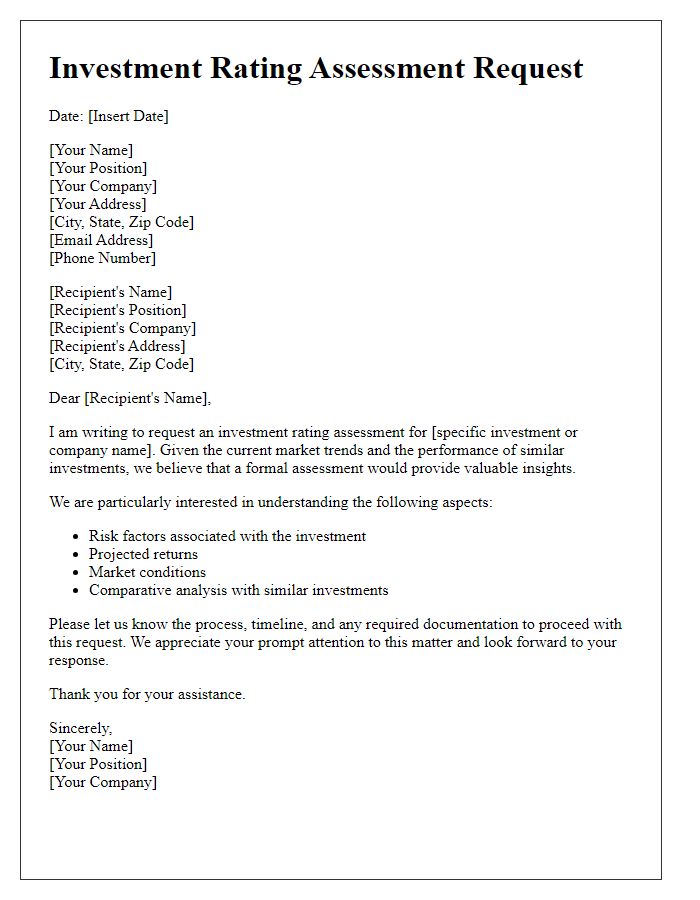
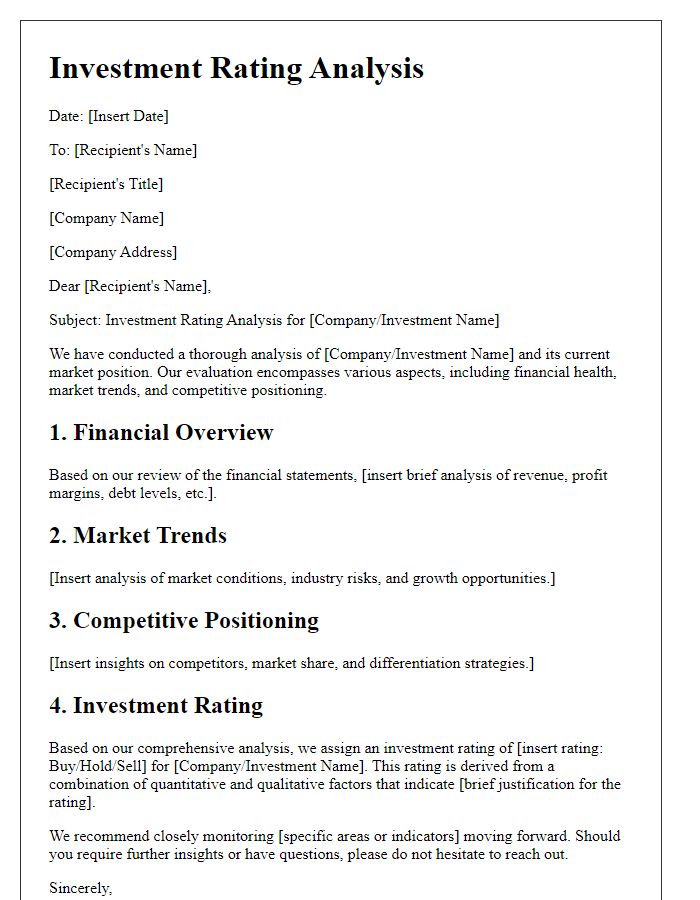
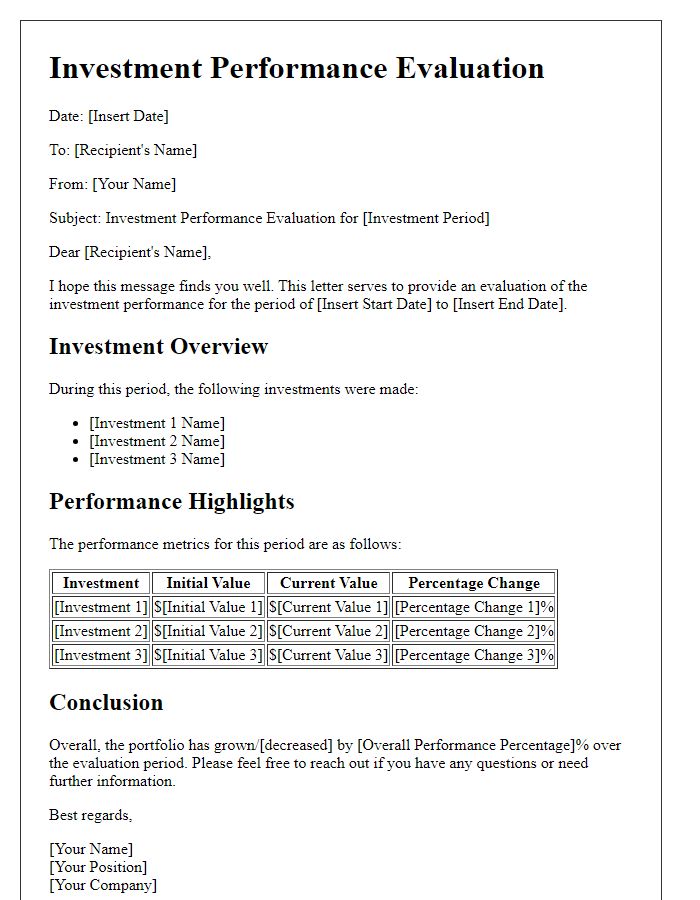
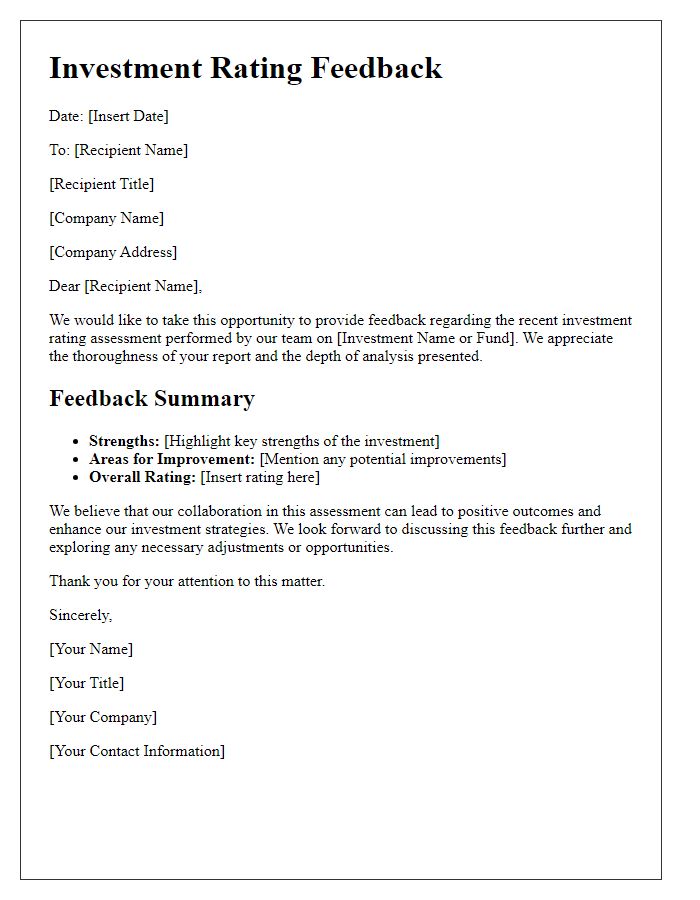
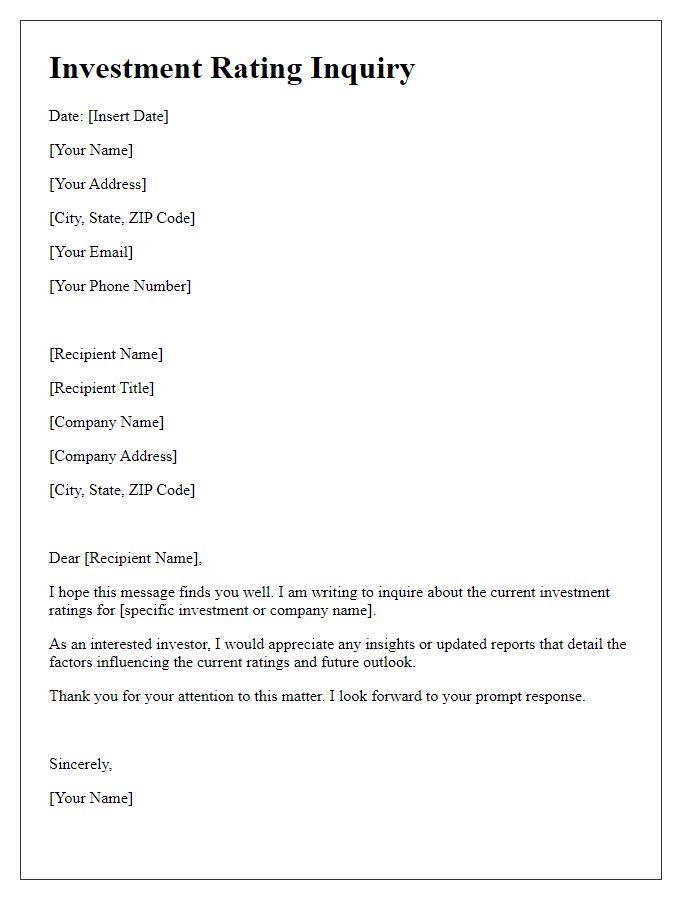
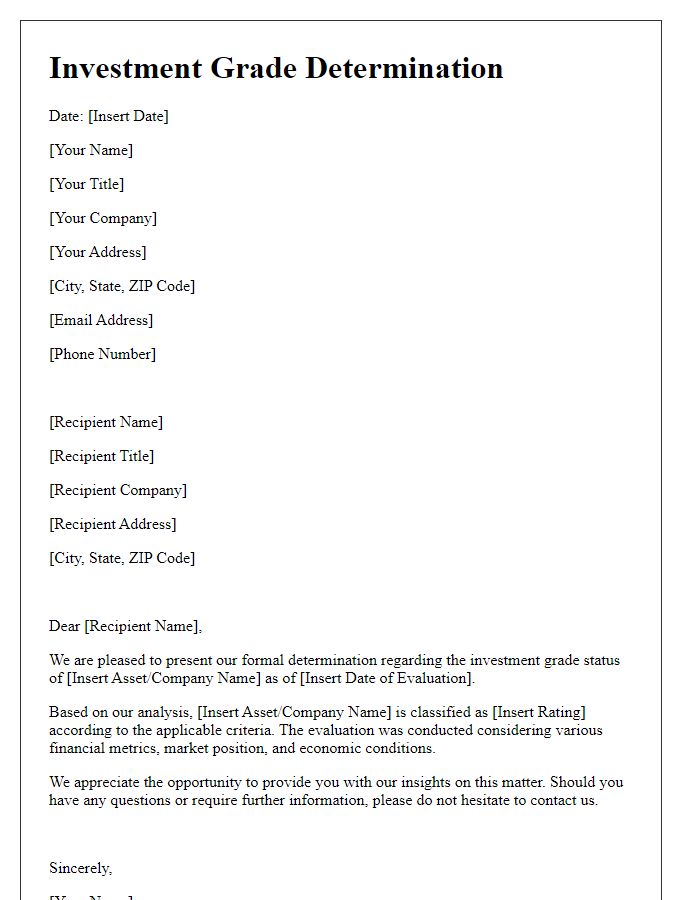
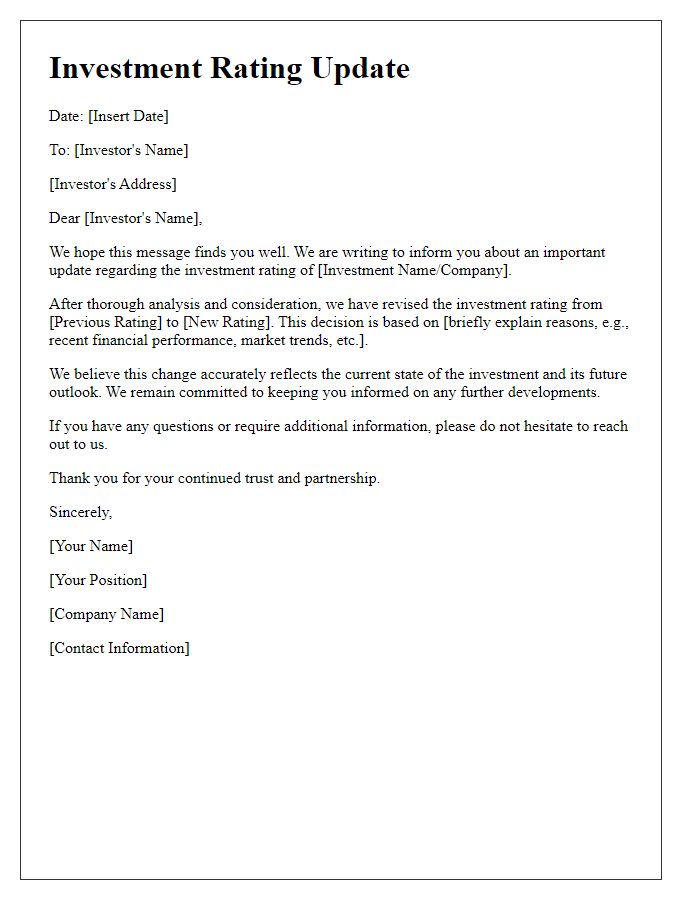

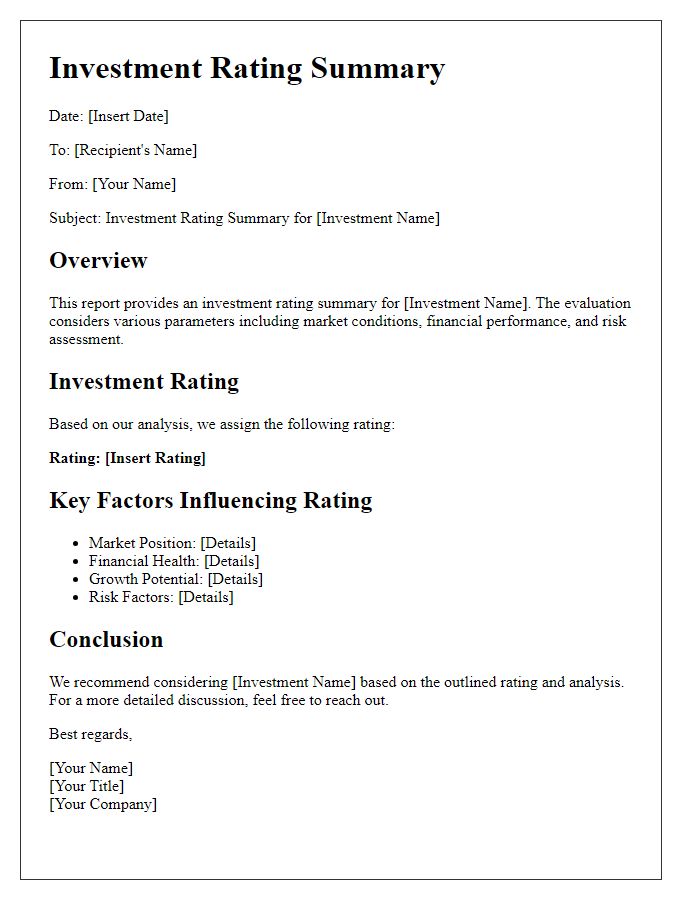
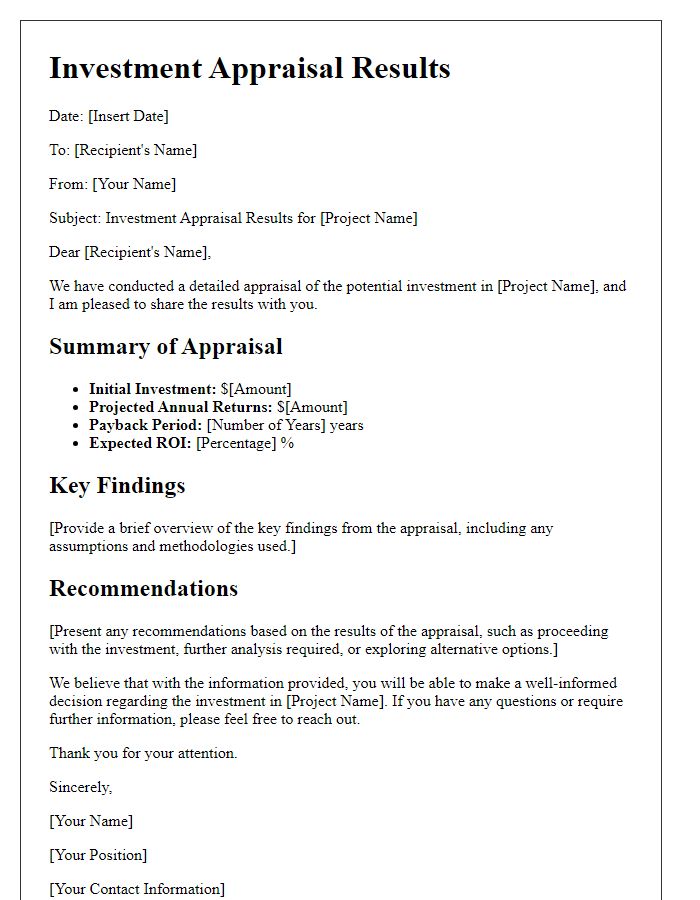


Comments